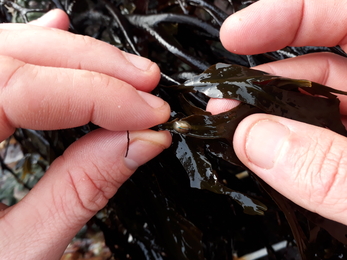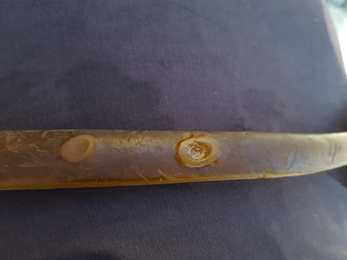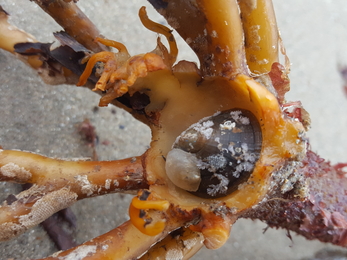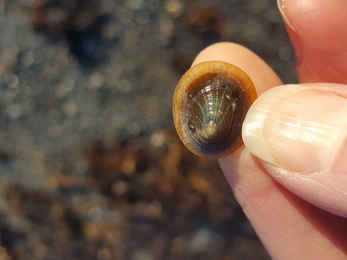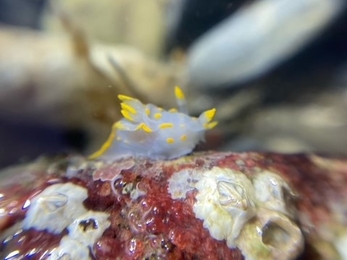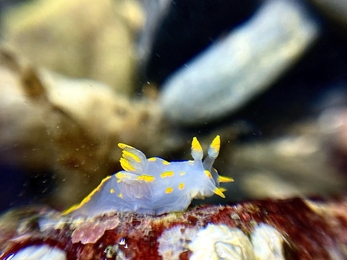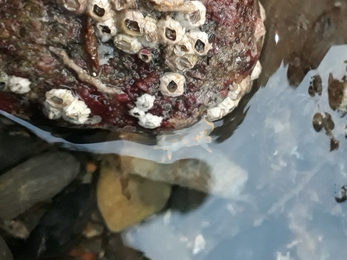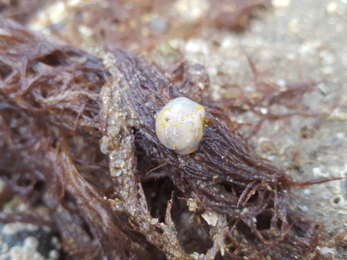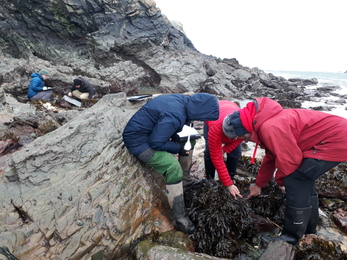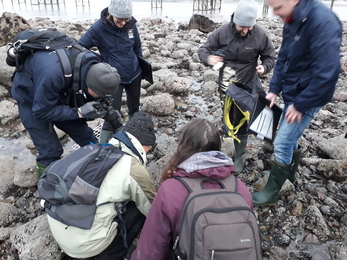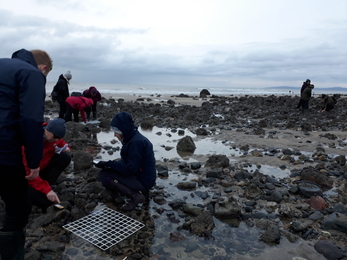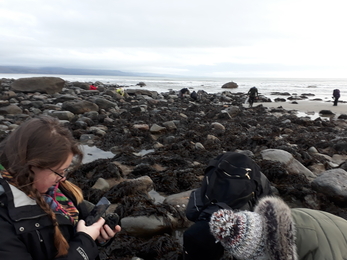Instead we had three named storms right across the mid-month’s low tides and so several surveys (have-a-go x2 and group survey x1) were cancelled.
Group Shoresearches were carried out at Llandudno Pier (Pen y Gogarth / Great Ormes Head SSSI) and Porth Dafarch (Glannau Ynys Gybi / Holy Island Coast SSSI) and later in the month, luckily we managed to sneak a have-a-go session in between the named storms at Penrhyn Bay (Liverpool Bay SPA) and Cricieth (Tiroedd a Glannau Rhwng Cricieth ac Afon Glaslyn SSSI). Despite surveys cancelled, those storms gave our volunteers a reason to inspect the strandlines for our Beached! project.
Welcome to our newcomers and another huge THANK YOU to those established and newer Shoresearch volunteers who came to help. Your input is really valuable.
Surveys completed: number of quadrats 26; Walkover 120m2 ; timed surveys 140mins (wireweed and slipper limpets).
Number of individual volunteers: 15, (new recruits coming to/booking on group surveys 6); have-a-go participants 15.
"Thanks a lot for today, I had such a blast!" -Reece Halstead
Seasonal findings – we found plenty of blue-rayed limpets higher up on the wave-exposed west coast Anglesey shore at Porth Dafarch and wondered at whether this might be something to do with seasonal movements.
More reading introduced us to the life and times of the blue-rayed limpet (as much as is known). These molluscs are thought to be short-lived (<1 yr commonly) and have been seen in various studies to have a route from settling, as newly-settled spat, onto pink encrusting algae lower on shore in early spring, before moving when slightly larger onto algal fronds. They grow quickly over spring and summer moving onto kelp and migrate later in summer down to the kelp holdfast to avoid being detached with the shed kelp frond, over winter. These movements are thought to be via the surface, but also perhaps by something called mucus rafting! Some individuals survive beyond 1 yr, but these are few. You can see where a blue-rayed limpet has been by finding oval-shaped, nibbled areas on algae (especially so if you look within kelp holdfasts found on the strandline after winds). It has been thought that extensive BR limpet grazing can impact on kelp populations, by helping to cut off blades and stipes, with this grazing.


